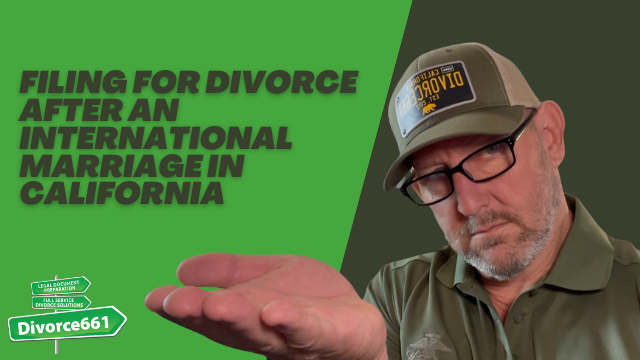How to Handle Division of Stocks and Investments in Divorce | Expert Guidance from Divorce661
Divorce is often perceived as a straightforward process of splitting tangible assets like the family home or bank accounts. However, in today’s financial landscape, investments such as stocks, brokerage accounts, cryptocurrency, and equity compensation like RSUs (Restricted Stock Units) play a significant role in the marital estate. Navigating the division of these complex assets requires a clear understanding of the law, precise valuation, and smart strategies to avoid unnecessary taxes or disputes.
As someone who has helped countless clients through this process, I want to share essential insights on how to properly handle the division of stocks and investments during a California divorce. By following these guidelines, you can protect your financial future and achieve a fair settlement without undue stress.
Understanding Community Property Rules for Investments in California
One of the foundational concepts in California divorce law is community property. This means that any assets acquired during the marriage are considered jointly owned by both spouses, regardless of whose name appears on the account or title. This includes investments such as:
- Stocks and mutual funds
- Brokerage accounts
- Cryptocurrency holdings
- RSUs and unvested stock options
Because these investments are community property, both spouses are entitled to an equal share upon divorce. Ignoring these assets or failing to identify them correctly can lead to significant financial loss and unfair outcomes.
How to Identify and Value Investments for Divorce Division
Before you can divide investments, it’s critical to compile a comprehensive list of all relevant assets. This means gathering information on:
- Individual stocks and mutual funds
- All brokerage accounts, including retirement accounts if applicable
- Cryptocurrency wallets and exchange accounts
- Equity compensation such as RSUs and stock options, including unvested ones
Each investment must be reviewed carefully to determine what portion was acquired during the marriage. This often involves tracing the source of the funds used to purchase the assets and distinguishing between separate and community property contributions.
Accurate valuation is equally important. Investments fluctuate in value, so the date of valuation—usually the date of separation or another court-specified date—must be agreed upon. Valuation may require statements from financial institutions, cryptocurrency exchanges, or even expert appraisals for complex holdings.
Why Accurate Valuation Matters
Failing to properly value investments can lead to disputes later in the divorce process or after the judgment is finalized. If one spouse unknowingly accepts less than their fair share, the financial consequences can be long-lasting. Conversely, overvaluing assets can cause unnecessary conflict and prolong negotiations.
A Real-Life Example: Seamless Investment Division
To illustrate how this process works in practice, let me share a recent case we handled at Divorce661. Our client had a substantial brokerage account that included a mix of stocks and mutual funds acquired over many years.
We began by tracing the marital contributions to the account to differentiate between community and separate property portions. This step is critical because it ensures that only the community property portion is divided equally.
Next, rather than liquidating the shares—which would have triggered capital gains taxes and delayed distribution—we arranged a transfer in kind. This means the shares were transferred directly to the other spouse’s brokerage account without selling them. This approach avoids unnecessary tax consequences and preserves the original investments.
The division was clearly outlined in the divorce judgment, which was court-approved and designed to be easily processed by the clients’ brokerage firms. This clarity prevented any confusion or disputes post-divorce.
Key Steps to Secure a Fair Investment Division
- List all investments: Don’t overlook any assets. Include stocks, mutual funds, crypto, RSUs, and unvested options.
- Trace contributions: Determine which funds were marital and which were separate property.
- Get accurate valuations: Use official statements and expert advice to value assets at the proper date.
- Choose tax-efficient division methods: Transfers in kind can help avoid liquidation and capital gains taxes.
- Document everything: Ensure the division terms are clearly spelled out in the divorce judgment and approved by the court.
- Coordinate with brokerages: Work with financial institutions to facilitate smooth transfers and avoid processing delays.
How Divorce661 Supports You in Dividing Investments
At Divorce661, our mission is to make the division of investments straightforward and stress-free. We provide flat-fee divorce services that include expert support for handling stocks, crypto, RSUs, and brokerage accounts. Here’s how we help:
- Clear and enforceable terms: We draft agreements that are easy for courts and financial institutions to understand and implement.
- Collaboration with financial planners and brokerages: Our team works closely with experts and institutions to ensure all transfers and divisions are done correctly.
- Remote services: We serve clients across California without the need for in-person meetings, making the process convenient and accessible.
- Free consultation: We offer a no-cost initial consultation to evaluate your situation and explain your options.
By handling your investments correctly during divorce, you protect your portfolio and secure your financial future. Avoid the pitfalls of improper division and unnecessary tax consequences by working with experienced professionals who understand the nuances of investment division in California.
Protecting Your Financial Future: Final Thoughts
Dividing investments during a divorce can seem daunting, but with the right approach, it doesn’t have to be. Remember that stocks, mutual funds, crypto, and equity compensation are valuable assets that deserve careful consideration and fair treatment.
Start by identifying all your investments, tracing marital contributions, and obtaining accurate valuations. Use tax-efficient strategies like transfers in kind to avoid unnecessary liquidation and tax hits. Make sure the division terms are court approved and clearly documented to prevent future disputes.
If you’re facing a divorce in California and need help dividing your investments, don’t hesitate to reach out for professional guidance. At Divorce661, we are dedicated to helping you protect your portfolio and achieve a smooth, equitable resolution.
Visit divorce661.com to schedule your free consultation and take the first step toward securing your financial peace of mind.
Have Questions About Dividing Stocks, Crypto, or RSUs?
Handling investments in divorce is complex, and every case is unique. If you have questions about how to divide specific assets like cryptocurrency, RSUs, or brokerage accounts, feel free to reach out or leave a comment. I’m here to help you navigate this challenging process with confidence.










